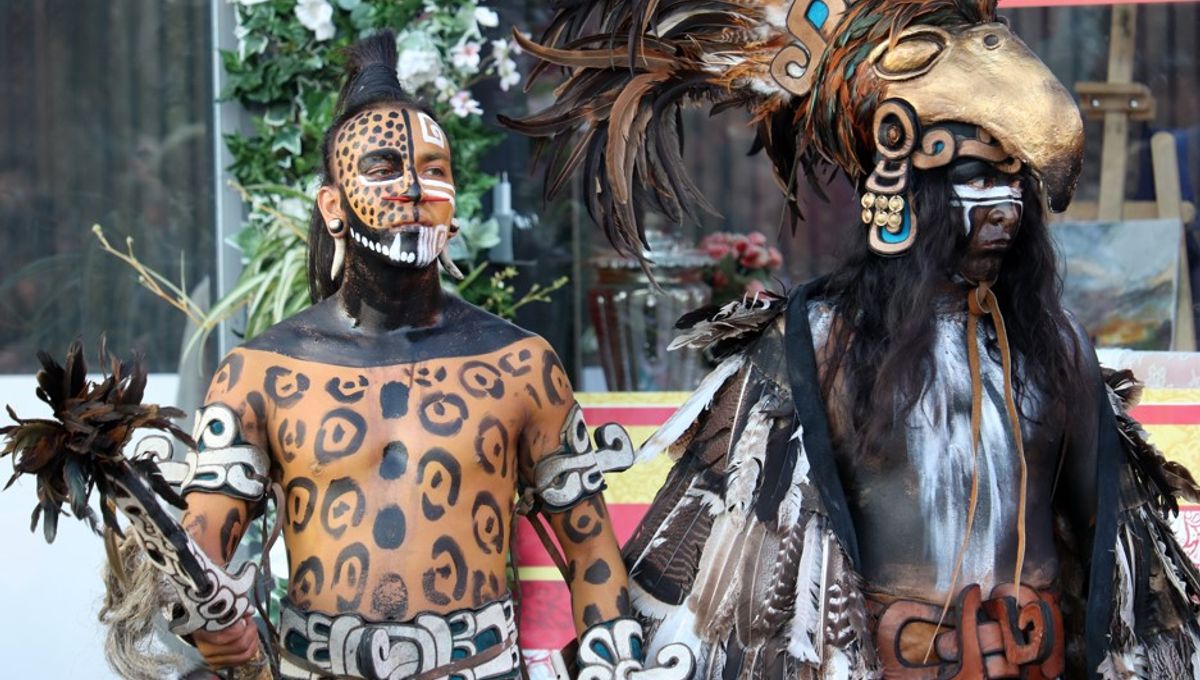
A pair of chert points found alongside human skeletons in a cave in Belize may represent the first known tattooing needles ever discovered from a site linked to the ancient Maya civilization. After testing the fragmented tools on pig skins, the authors of a new study determined that the markings present on the ancient relics are consistent with those produced by a particular method of tattooing.
It has long been assumed that the ancient Maya were inked up, with reports from Spanish conquistadors describing how communities like the Mopan Maya sported tattoos on their breasts and penises, among other body parts. Sculptures and other artworks from the Classic Maya period, meanwhile, often depict individuals covered in geometric designs.
And while no examples of preserved tattooed skin have ever been recovered from ancient Maya sites, a pre-Hispanic mummy from the neighboring Toltec culture has been found with tatts on her arms. However, as the study authors point out, ancient Maya tattooing implements have so far “gone undetected in the archaeological record”.
Changing all that, the researchers announce the discovery of two “burin spalls” – or stone flakes – from a site called Actun Uayazba Kab in Belize. Also known as Handprint Cave, Actun Uayazba Kab contains human remains as well as high-value objects made of jade and obsidian, all of which suggests that the site held ritual significance.
Based on the shape of the burin spalls, plus the fact that the tips appeared to be coated with some sort of black pigment, the study authors began to speculate that they may have been used to create “puncture tattoos”. Sometimes called “hand/stick-poked tattoos”, these designs are created by applying pigment to the tip of a needle in order to directly insert it into the skin.
This technique is thought to have been the most common method of creating tattoos prior to the invention of modern electric tools, and was also used to decorate the skin of the famous prehistoric mummy Ötzi The Iceman.
Observing the microscopic pattern of use-wear on the burin spalls, the researchers note that these markings are “clearly consistent with what would be expected on chert tools used on meat, skin, and fresh hide given comparisons with experimental and archaeological tools.”
To further the hypothesis that the items were used for tattooing, the study authors then used a replica spall to create a puncture tattoo on fresh pig skin, which they say “is recognized as the best biological proxy for human skin.”
Sure enough, the use-wear pattern left on this experimental spall was consistent with those on the two ancient tools found in the cave, all of which “provides additional support for the use of these artifacts as tattooing tools.” Such a conclusion is bolstered by the presence of a black pigment near the tips of the spalls, which may well have been used as tattoo ink.
“Although the chemical composition of the residues is unknown, it is conceivable that they are traces of soot-based inks like those reported in the ethnohistoric literature,” write the researchers.
Summing up their findings, the authors go on to state that “based on tool form, use-wear analysis, and surviving residues, we suggest the two retouched chert burin spalls from Actun Uayazba Kab were likely puncturing tools used by the ancient Maya for the purposes of creating tattoos.”
The study is published in the Journal of Archaeological Science: Reports.
Source Link: Ancient Maya Tattooing Needles Found In Burial Cave In Belize